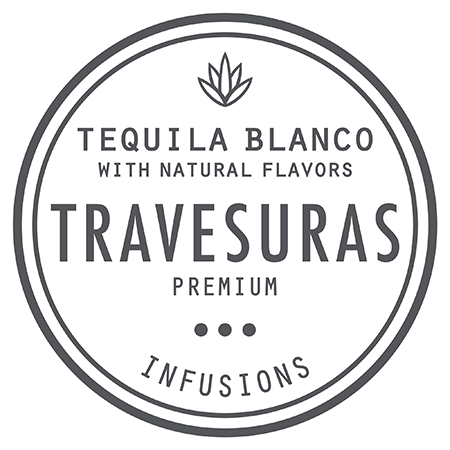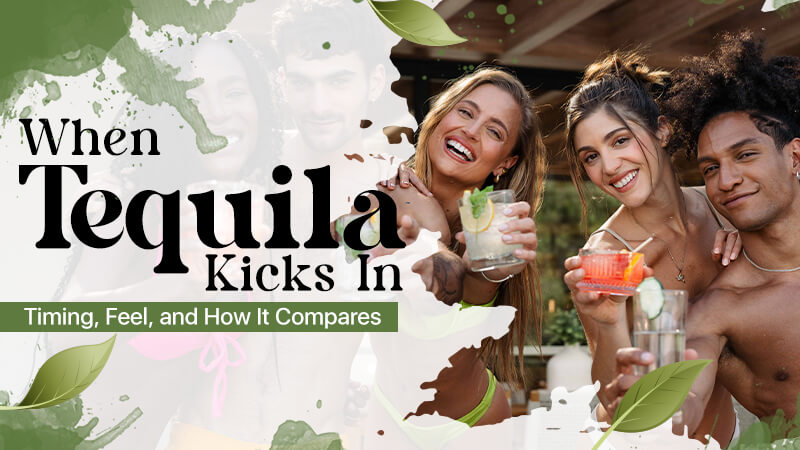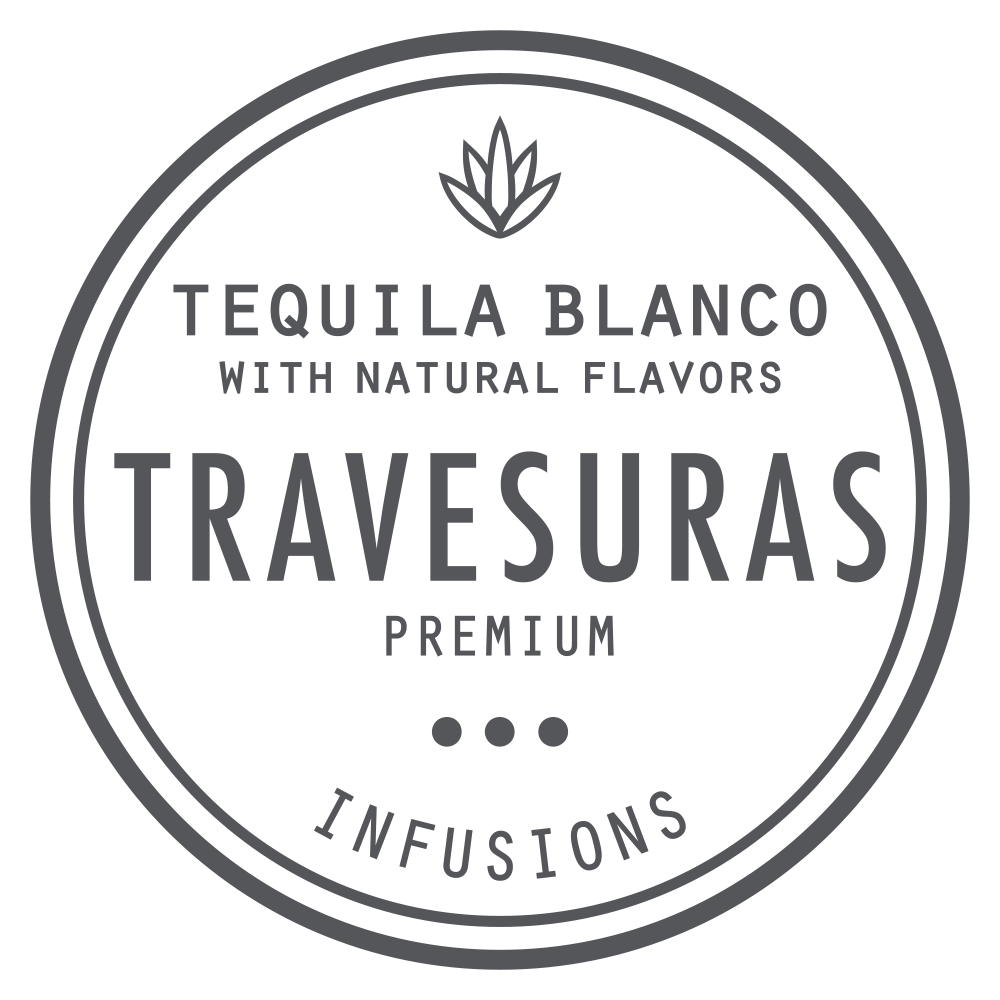If you’ve ever wondered how long it takes tequila to hit—and what that “hit” actually feels like - you’re not alone. Tequila’s reputation ranges from “party starter” to “smooth sipper,” but the real story is simpler: ethanol is ethanol. The timing and intensity have far more to do with how you drink, what you drink it with, and what’s already in your stomach than the spirit’s nationality or label. Let’s break down in plain English what happens when tequila kicks in.
The Short Answer: How Fast Does Tequila Kick In?
Most people start to feel the initial effects of alcohol within about 10–20 minutes, with blood alcohol concentration (BAC) typically peaking around 30–60 minutes after a drink. That window stretches if you’ve eaten recently and shrinks if you’re drinking on an empty stomach or using fizzy mixers.
A “Standard Drink” of Tequila (And Why It Matters)
In the U.S., one standard drink equals about 14 grams (0.6 fl oz) of pure alcohol. For distilled spirits like tequila at 40% ABV, that’s 1.5 ounces—whether it’s sipped neat, in a cocktail, or taken as a shot. Keeping track of standard drinks helps you pace yourself and anticipate when you’ll feel the effects.
Why Tequila Feels Faster Sometimes

Several factors change how quickly tequila moves from glass to “whoa.”
• Carbonation speeds absorption. Tequila with a carbonated mixer (think soda water, tonic, or a fizzy cocktail) tends to produce a faster rise in BAC than still mixers. Multiple controlled studies have shown faster absorption with bubbles.
• Empty vs. full stomach. Food slows gastric emptying and lowers peak BAC—substantially. A substantial pre-drink snack or meal can cut peak BAC by more than half compared with drinking on an empty stomach.
• What you’re drinking, not just how much. Spirits with a still mixer, wine, and beer carrying the same total ethanol can hit differently: vodka/tonic (spirit + carbonation) produced higher and faster peaks than wine or beer in research settings. Beer and wine are absorbed more slowly on average.
• The “drink is a drink” rule. Type of alcohol doesn’t inherently change BAC for the same ethanol dose; pacing, mixers, and context do.
Timeline: From First Sip to “I Feel It”
1. 0–10 minutes: Little change - absorption of infused tequila is just beginning.
2. 10–30 minutes: Rising effects - warmth, lightness, looser conversation; faster if carbonated or taken as shots.
3. 30–60 minutes: Peak range for many people; your BAC is near its highest.
4. 60+ minutes: Effects depend on continued drinking, food intake, hydration, and individual metabolism. Your body metabolizes about one standard drink per hour on average, but that varies.
Shots vs. Sips: Why Pace Changes Everything
Downing two 1.5-oz shots back-to-back compresses the absorption curve. When tequila kicks in, you’ll likely hit your peak faster and higher than if you sipped the same amount over 45 minutes—especially with fizzy chasers. If you’re aiming for a smooth, social glow, spacing drinks and pairing with food is the simplest strategy.
What’s Happens to Your Body When Tequila Kicks In
Once you drink, ethanol moves through the stomach and small intestine into the bloodstream and travels to the brain. Enzymes (ADH, then ALDH) metabolize ethanol to acetaldehyde and then acetate, which your body ultimately breaks down into water and carbon dioxide. Most folks metabolize alcohol at a fairly steady rate, but genetics, body size, sex, and other factors can shift that curve.
Does Tequila Hit Differently Than Whiskey, Vodka, or Rum?
At the same ethanol dose, not really. The biggest differences come from how you drink them (shot vs. sip, neat vs. fizzy) and what’s in the glass (sugar, carbonation). Congeners—flavor compounds more abundant in darker spirits—may influence hangover severity, but not the acute onset timing. Studies show worse hangovers after high-congener spirits like bourbon than after low-congener spirits like vodka; tequila’s congener profile varies by style, but onset is still about ethanol + context.
Tequila vs. Beer and Wine: The Real-World Differences

• Beer (lower ABV, larger volume): Slower average absorption; lower peak BAC versus the same ethanol taken as spirits with a fizzy mixer. The volume plus carbonation can be a mixed bag—filling, but still potentially quick if very bubbly.
• Wine (moderate ABV): It’s typically slower than spirit + soda; smaller volume than beer per standard drink, but still often slower absorption than a carbonated spirit cocktail.
• Tequila cocktails or shots: The fastest peaks tend to show up with carbonated tequila cocktails, such as Aperol Margarita Tequila Cocktail, Ranch Rose, Tequila & Ginger Ale, etc., or multiple quick shots—especially on an empty stomach.
Mixers That Change the Math
• Fizz (soda water, tonic, cola): Faster absorption; sharper rise.
• Still mixers (juice, water): Generally smoother climb.
• Sugar content: Doesn’t consistently slow onset, but sweet mixers can mask strength, nudging you to drink faster.
• Food pairing: The single most reliable way to slow and smooth the curve.
How to Tell It’s Kicking In (And Keep it There)
Early signs include warmth, loosened social anxiety, mild euphoria, and a touch of dizziness if you stand too fast. The sweet spot is where mood lifts but coordination, judgment, and reaction time aren’t obviously dulled. Because peak often lands 30–60 minutes after a drink, wait before ordering another—especially with shots or fizz.
Smart Pacing: Practical Guardrails
• Count standard drinks. For tequila at 40% ABV, 1.5 oz = one drink. Keep a mental tally.
• Mind the 1–2 guideline. U.S. dietary guidance suggests up to 1 drink per day for women and 2 for men, not as a target—just a limit for lower risk.
• Eat before and during. Aim for protein + fat (think tacos with guac). Your future self will thank you.
• Space it out. One drink per hour is a helpful ceiling for many.
• Watch carbonation. If you’re sensitive to fast onsets, choose still mixers.
Common Myths, Cleared up
• “Tequila hits harder than other spirits.” Not inherently. Equal ethanol = comparable BAC potential. Delivery (shots, fizz, timing) is the real driver.
• “Silver vs. aged changes the buzz.” Flavor and congeners can affect your next day, but onset is still about ethanol dose, mixers, and food.
• “You can rush it with sugary mixers.” Sugar can mask strength, but carbonation—not sugar—is the bigger accelerator.
Comparing Typical Scenarios
• Neat/sipped tequila (with food): Gradual build; noticeable within ~20 minutes; peak nearer the 45 to 60-minute mark.
• Tequila highball (with soda): Quicker onset and higher peak than wine/beer at the same ethanol, especially on an empty stomach.
• Two quick shots, no food: Fastest spike. Expect effects to climb for 30–60 minutes after the second shot.
How Long the Feeling Lasts
Your body metabolizes roughly one standard drink per hour on average. That doesn’t mean you’re sober on the hour; it means your BAC is trending down. Drink steadily over several hours and your peak may arrive later—and last longer—than you expect.
The Bottom line
Tequila’s “kick” is mostly a timing game shaped by dose, pacing, carbonation, and food. When tequila kicks in, expect first effects within 10–20 minutes and a peak around 30–60 minutes after a standard drink. If you prefer a smooth, social glow, pair with a meal, avoid back-to-back shots, and keep an eye on fizzy mixers. Whether you’re sipping neat or mixing something bright and bubbly, understanding the curve lets you enjoy the moment—and the morning after. Want to try unique tequilas? Tequila Travesuras has infusions you’ve probably never tasted before!
Must Read: Which Tequila Is 100% Agave?
FAQs
Q1. Does the type of tequila affect how fast it kicks in?
A1. Yes. Premium tequilas made from 100% agave tend to hit smoother and slightly slower, while mixed tequilas with added sugars may absorb faster, leading to quicker but harsher effects.
Q2. Can food slow down tequila’s effects?
A2. Absolutely. Eating before or while drinking slows alcohol absorption. A meal rich in fats or proteins helps your body process tequila more gradually, preventing a quick spike in intoxication.
Q3. How long do tequila effects typically last?
A3. On average, tequila’s effects last between two to three hours. Factors like how much you drink, your metabolism, and hydration level can extend or shorten that duration.
Q4. Does mixing tequila with other drinks change how it kicks in?
A4. Yes. Mixing tequila with sugary or carbonated beverages often speeds up absorption. However, mixing with water or juice can help moderate the intensity and slow the onset.
Q5. How can you tell when tequila is starting to kick in?
A5. You’ll notice early signs like warmth in your body, light euphoria, and loosened inhibitions. These typically appear 10–15 minutes after your first drink, depending on your tolerance.
- View: 86
- Categories: Noticias


